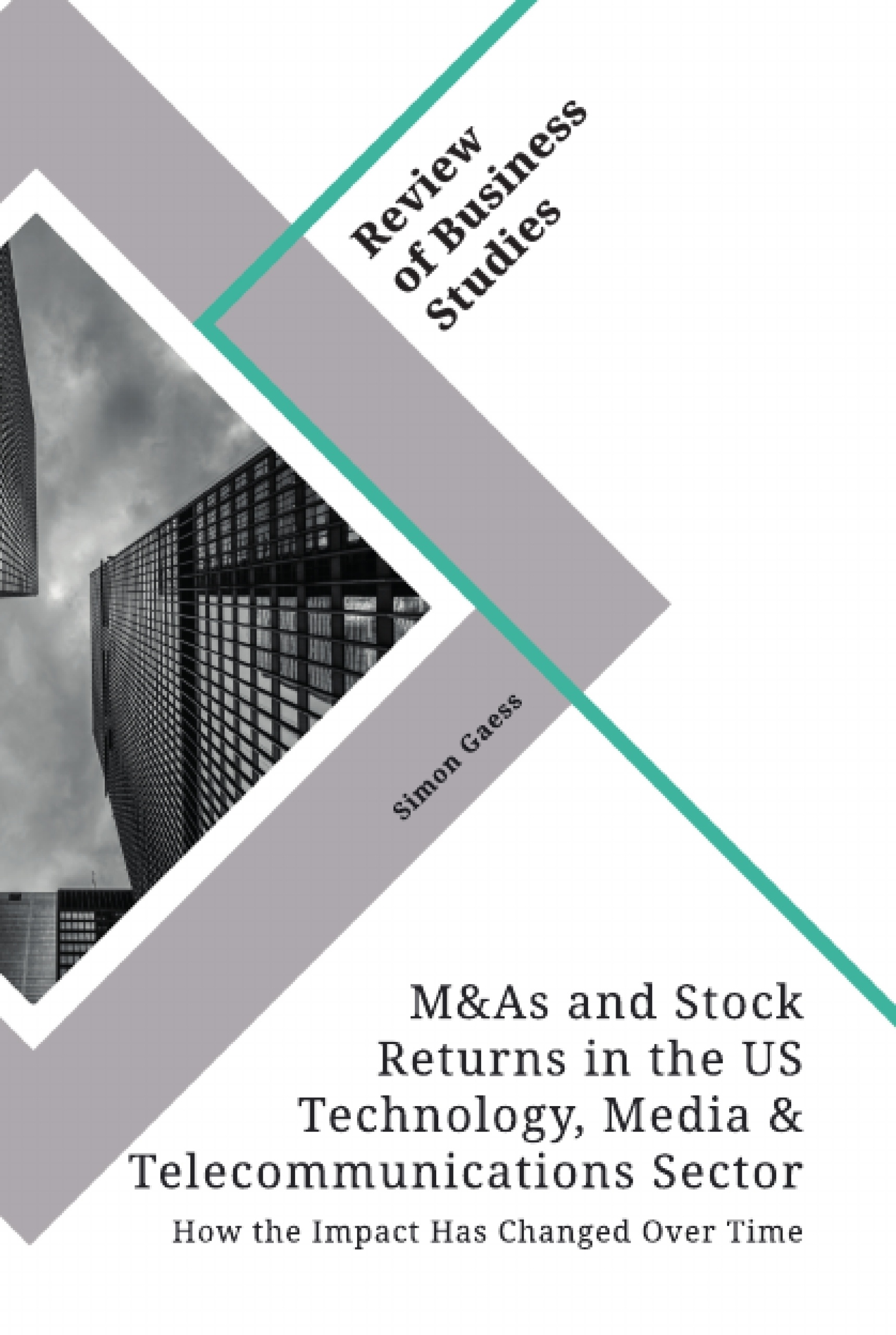This bachelor thesis sets out to investigate whether the observed past and present effects of M&A deal announcements on target and acquirer cumulative abnormal returns (CARs) to shareholders, also occur on an industry-specific level in the U.S. Technology, Media & Telecommunications (TMT) industry, and over time by reviewing three distinct time frames between 2000 and the end of 2019. This thesis emphasizes “mega-deals”, which are M&A transactions with values greater than or equal to USD 500m.
The recentness of the data and the emphasis on deal-value and industry-specific M&A deals make these findings unique. The event study method is applied to examine the concrete effects that an event, an M&A deal announcement, exerts on acquiring and target firm stock returns. Hereby, the difference between the actual stock returns–which occur due to the event–and the expected stock returns is analyzed and subsequently tested for significance. The main and null hypothesis of this thesis is that M&A deal announcements have no effect on the average of the stock returns of acquiring and target firms.
A frequently studied area and old research question of corporate finance, ever since its initial inception in the 1960s, is the effect of mergers and acquisitions (M&As) on the wealth of shareholders of the acquiring and target companies. As recently as the early 2010s, a near-universal consensus amongst research and business press has existed, that M&As tend to generate little to no shareholder value for acquiring firms, while target shareholders incur significant returns. These findings draw on the theory of market efficiency and rational expectations to assume that such changes to the stock prices, abnormal returns (ARs), reflect the discounted value of expected future profits, i.e. cash-flows and rapidly price-in new publicly disclosed information, such as a merger announcement.
Since 2012, however, a novel strand of research has emerged which has observed these previously low ARs for acquiring shareholders becoming on average significantly positive for the first time in history on a global scale following the Great Financial Crisis (GFC). This is attributable to an ensuing overall improvement to corporate governance frameworks and M&A dealmaking. Markedly, this trend was later found to start reversing back to previous pre-GFC levels.
Inhaltsverzeichnis (Table of Contents)
- Introduction
- Literature Review
- Theoretical Background
- Empirical Findings
- Data & Methodologies
- Data
- Methodology
- General Setup
- Estimation of Expected Returns
- Estimation of Abnormal Returns
- Testing of Hypotheses
- Empirical Results
- Discussion and Interpretation
- Setup
- Acquiring Shareholders
- Target Shareholders
- Conclusion
Zielsetzung und Themenschwerpunkte (Objectives and Key Themes)
This study investigates the changes in the impact of mergers and acquisitions (M&A) on stock returns within the US technology, media, and telecommunications (TMT) sector over time. By employing event study methodology, the research aims to identify and quantify the abnormal returns experienced by acquiring and target firms around the announcement of M&A deals. The study analyzes data spanning multiple time periods, allowing for a comprehensive understanding of the evolving dynamics of M&A activity within this sector.
- Impact of M&A on stock returns in the US TMT sector
- Changes in M&A impact over time
- Abnormal returns of acquiring and target firms
- Event study methodology
- Factors influencing M&A performance
Zusammenfassung der Kapitel (Chapter Summaries)
- Introduction: The chapter introduces the research topic, outlining the significance of M&A in the US TMT sector and the importance of understanding its impact on stock returns. It provides a brief overview of the research question and the methodologies employed.
- Literature Review: This chapter examines existing research on M&A in the TMT sector, discussing theoretical frameworks and empirical findings related to the impact of M&A on stock returns. It explores various factors influencing M&A performance and highlights the need for further research to understand the evolving dynamics of M&A activity in this sector.
- Data & Methodologies: This chapter details the data sources and the methodological approach used in the study. It describes the data selection criteria, the event study methodology employed, and the specific methods used to estimate expected and abnormal returns.
- Empirical Results: This chapter presents the results of the empirical analysis, focusing on the abnormal returns observed for both acquiring and target firms around the announcement of M&A deals. It analyzes the results for different time periods and explores potential patterns or trends in the data.
- Discussion and Interpretation: This chapter interprets the empirical findings, drawing conclusions about the impact of M&A on stock returns in the US TMT sector and highlighting any significant changes observed over time. It explores the potential factors contributing to these findings and discusses the implications for investors, firms, and policymakers.
Schlüsselwörter (Keywords)
Mergers and Acquisitions (M&A), US Technology, Media & Telecommunications (TMT) Sector, Stock Returns, Event Study Methodology, Abnormal Returns, Acquiring Firms, Target Firms, Market Model, Time-Series Analysis, M&A Performance.
- Quote paper
- Simon Gaess (Author), 2021, Mergers & Acquisitions and Stock Returns in the US Technology, Media & Telecommunications Sector. How the Impact Has Changed Over Time, Munich, GRIN Verlag, https://www.grin.com/document/1127964




